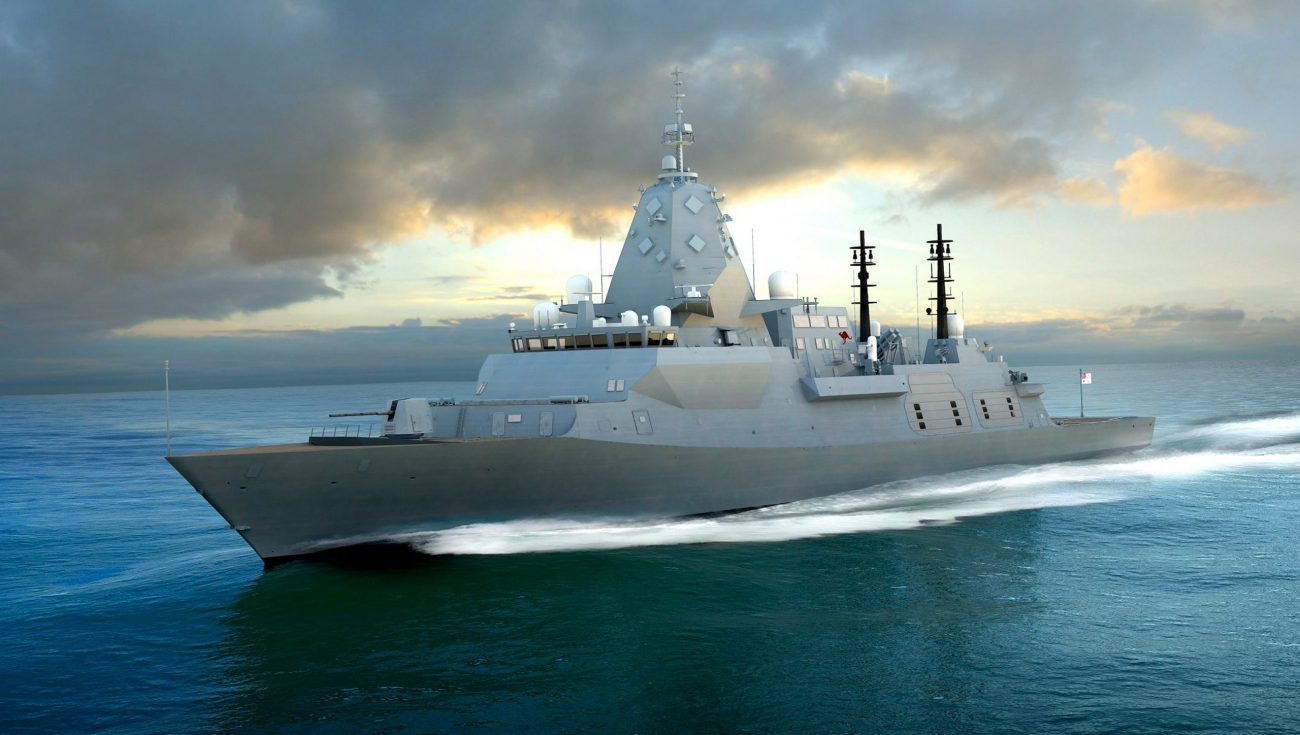One of Australia’s significant and problematic defense endeavors, the Hunter-class frigate program, has been spared from termination following a comprehensive assessment of the navy’s surface combat fleet.
The review has purportedly confirmed intentions to proceed with the construction of at least six, and possibly additional, of these sizable and costly warships in the foreseeable future.
The ABC report says that the Australian government is set to reveal its “Future Navy” plan next week, highlighting a commitment to “continuous naval shipbuilding.”
The plan will confirm the participation of British-owned BAE Systems in the US$45 billion project aimed at replacing Australia’s aging Anzac-class frigates.
The news could serve as a significant relief for the project, which has faced consistent criticism from experts due to weight growth in the frigate design, scheduling delays, and concerns over what some perceive as insufficient vertical launching system cells.
The project’s inception traces back to 2018 when BAE Systems was controversially chosen to oversee the construction of nine anti-submarine vessels based on the UK’s Type 26 warship.

The company is the primary contractor for the Hunter-class frigate program, prevailing over the proposals by Italian firm Fincantieri’s FREMM pitch and Spanish shipbuilder Navantia’s offering of a modified F100 variant.
However, the program, centered in South Australia, has encountered delays and design issues, resulting in the first frigate not anticipated until the early 2030s.
BAE Systems is currently undertaking a series of prototyping activities at a specifically designed shipyard in Osborne, South Australia.
The report, citing defense and industry insiders, suggests that British Prime Minister Rishi Sunak has personally lobbied for the project’s continuation, engaging directly with Australian Prime Minister Anthony Albanese. Additionally, Navy Chief Vice Admiral Mark Hammond is reported to support the program strongly.
Moreover, in recent days, industry experts have speculated that BAE Systems could potentially be tasked with constructing up to 16 warships.
Under this scenario, the hulls in subsequent batches would eventually be modified to replace Australia’s existing and smaller Air Warfare Destroyers.
Most Expensive Surface Combatant In The World?
This Hunter-class frigate program often faces criticism due to concerns about escalating costs. Initially projected at US$30 billion in 2016, the price of the Hunter-class program surged to US$45 billion two years later. Furthermore, there are expectations that the cost will increase significantly once more.
A person closely involved with the project told ABC Australia, “At more than US$4.5 billion each — the Hunter Class frigate could end up being the most expensive surface combatant in the world.”
Similarly, last year, a scathing report from the auditor-general highlighted significant concerns regarding Australia’s US$45-billion fleet of new frigates.
The report criticized the Australian Defence Department for failing to adequately assess whether taxpayers were getting value for money and warned of a substantial cost overrun and fresh delays.
The blame was directed at shipbuilder BAE Systems, accused of underestimating the costs of designing the ship, combat systems, and construction.

The report pointed out the impact of extra leasing costs at the Adelaide shipyard, inflation, and rising supply chain costs, all contributing to the unaffordability of the project.
The decision by the Turnbull government in 2018 to select BAE Systems for the construction of the nine Hunter-class frigates also came under scrutiny, particularly as the report highlighted a lack of documentation regarding how BAE’s Type 26 design was chosen over rival bids from Navantia and Fincantieri, which were deemed to have the “two most viable designs.”
While Navantia’s F-100 frigate and Fincantieri’s FREMM design were already operational in European navies, questions were raised about the feasibility of the Type 26, which existed only on paper.
The report further expressed worries about the increased weight and size of the ship to meet Australian requirements, potentially impacting its promised performance.
However, Alex Luck, a defense analyst specializing in German military modernization, NATO, and naval programs globally, pointed out that Australia incorporates through-life costs in significant programs.
This approach often leads to significantly higher ticket prices than procurements in other parts of the world, where costs may only include the product and related research and development, sometimes not even that, he added.
Meanwhile, naval authorities have identified several key challenges, including only “minimal penalty clauses” in the extensive SEA5000 shipbuilding contract and the immature design of the British Type 26. Yet, they acknowledge that the company has made progress in addressing many of these concerns.
Besides that, BAE Systems also unveiled a proposed dramatic modification of the warship last year in response to concerns about the limited firepower of the current Hunter-class design. This modification aimed to boost the number of vertical launch missile cells from just 32 to a configuration of 96.
- Contact the author at ashishmichel(at)gmail.com
- Follow EurAsian Times on Google News




